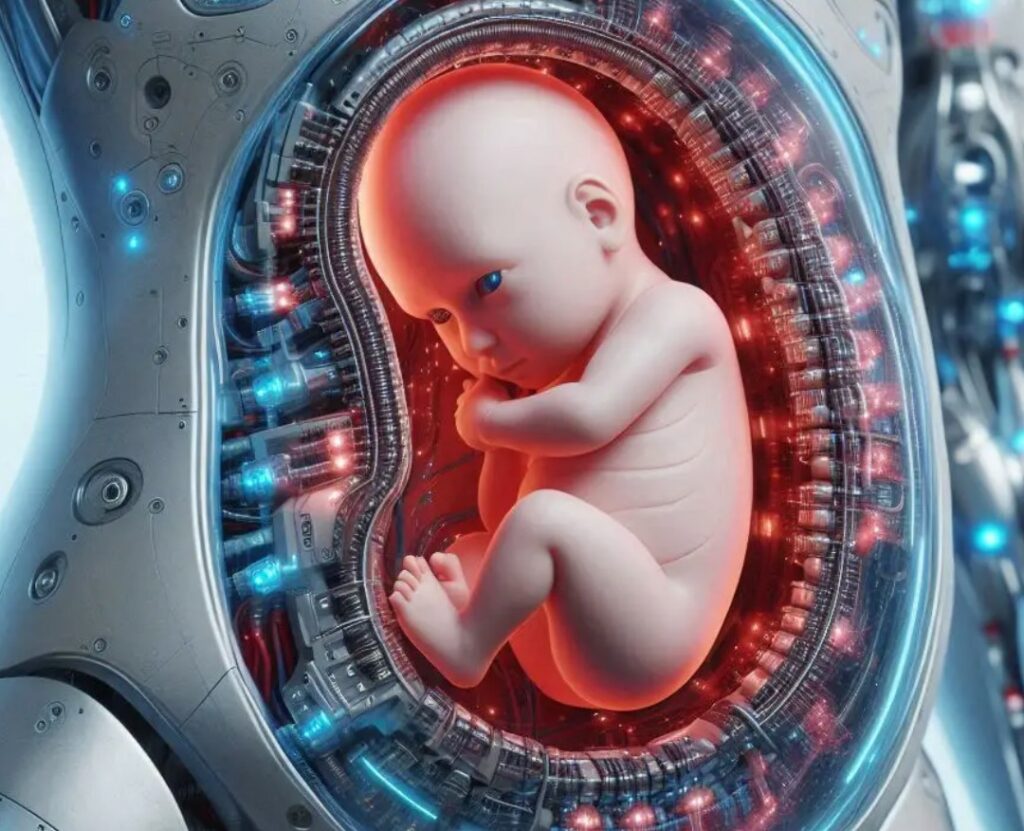
Chinese company Kaiwa Technology, based in Guangzhou, has announced its intention to create the world’s first “robotic womb” by 2026: a humanoid machine with an artificial womb in its abdomen capable of carrying a pregnancy to term and giving birth. The idea immediately caused a stir, dividing public opinion between skeptics concerned about the ethical implications and those who see it as an opportunity for people who cannot conceive naturally.
The robot’s cost, according to the developers, will not exceed 100,000 yuan (about $13,900). Zhang Qifeng, founder of Kaiwa Technology and an employee of Nanyang Technological University, presented the project at the World Robot Conference 2025 in Beijing. According to his idea, it’s not an “incubator on legs,” but a life-size humanoid capable of reproducing all stages, from fertilization and implantation to ten-month fetal development and childbirth.
The key technology is an artificial womb, in which the embryo develops in artificial amniotic fluid and is nourished through a tube that mimics the umbilical cord. According to Zhang, these mechanisms have already proven valid in laboratory conditions, and now there’s talk of moving from experimental setups to integration into a robotic platform that ensures human-machine interaction during the “pregnancy” process. The researcher claims that the first prototype will be visible within a year.
At the same time, he emphasized that discussions on the ethical and legal implications are already underway with the Guangdong provincial authorities, and that proposals have been submitted to the relevant authorities to include these scenarios in legislative initiatives. It’s not yet clear to what extent they will be applicable, but the very fact of this dialogue demonstrates the seriousness of the developers’ intentions.
The historical context is also important: experiments with artificial wombs have been ongoing for a long time. In 2017, at Children’s Hospital of Philadelphia, a premature lamb, equivalent to 23 weeks of human pregnancy, was placed in a so-called “biobag,” a transparent vinyl container containing warmed artificial amniotic fluid. Through a tube connected to the umbilical cord, the animal received nourishment and acquired fur within four weeks. However, these solutions were essentially advanced incubators and could only support life beyond a certain stage of development, but did not cover the entire life cycle, from conception to birth.
It is precisely this gap that Zhang Qifeng’s project aims to fill. However, he doesn’t reveal many details: the question remains as to how the fertilization and implantation phase will be implemented, and how realistic it is to proceed to the end within the artificial organism without human participation.
Interestingly, another innovative project was presented at the same Beijing conference, this time in the field of agriculture. Researchers from the Institute of Genetics and Developmental Biology of the Chinese Academy of Sciences presented GEAIR, the world’s first “intelligent” plant breeding robot. The system combines artificial intelligence and biotechnology and transforms breeding into a fully automated process.
Scientists used gene editing techniques to create plant lines with sterile pollen, allowing the robot to independently cross-pollinate and rapidly produce hybrid seeds. Combined with approaches such as direct breeding of new varieties and accelerated breeding programs, GEAIR is becoming a closed conveyor belt, essentially a robotic factory for creating crops with specific properties. In practice, the system has already been tested on soybeans: a line with sterile pollen has been bred, paving the way for increased hybrid selection and increased yields.
Follow us on Google News to receive daily updates on cybersecurity. Contact us if you would like to report news, insights or content for publication.
